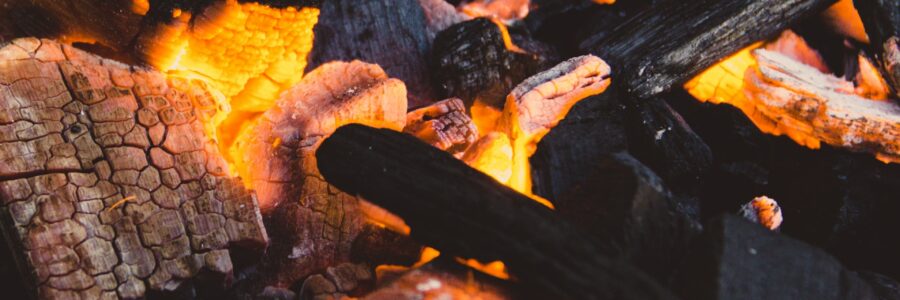The question of lump charcoal vs briquettes is one barbecue fans love to argue about. Let’s take a closer look and decide which is better. The answer might surprise you.
1.Lump charcoal and briquettes are very similar, but briquettes have some additives while lump should be all natural.
2.Lump charcoal has a bigger learning curve than briquettes. It can be inconsistent, and it burns more quickly so you’ll need to add more to the fire during long cooking sessions.
3.Charcoal briquettes burn more uniformly. They’re very consistent and burn longer than lump.
What is Lump Charcoal?
Lump charcoal is made from natural hardwoods. It’s made from scrap wood from sawmills as well logs, branches, and twigs. The wood is charred at very high temperatures with very little oxygen until it is carbonized.
Lump charcoal tends to burn hotter than briquettes and the temperature can get too high if you’re not keeping an eye on it. Lump burns a lot quicker. You’ll need to use more lump than briquettes to get the same amount of cooking time.
An advantage of lump charcoal is that it’s all natural and doesn’t contain the additives or binders that are in briquettes. At least you hope that’s the case. It comes down to how the manufacturer sourced their wood. If the trees they used were treated with any kind of pesticides or fungicides those could be in your lump charcoal whether you realize it or not.
Lump charcoal has become increasingly popular in recent years as consumers look for more natural and organic options in all aspects of life. There’s also a segment of grillers who prefer lump simply because it looks cool.
Lump charcoal comes in irregular sizes and shapes and will vary not just from one manufacturer to another, but even within the same bag.
What are Charcoal Briquettes?
Charcoal briquettes are made from wood scraps, chips, and sawdust from mills that is dried and then placed in an oven with very low oxygen until it burns down char.
It’s then crushed and mixed with additives like anthracite coal, lime, and corn starch. These additives act as binders, improve ignition, and promote a steady and efficient burn.
They then get pressed into their familiar shape, dried, bagged, and shipped to stores.
The biggest advantage to briquettes is consistency. Whether you’re searing a steak or slowly smoking a ham, you need to get the right temperature.
It’s just easier to maintain a proper temperature for an extended period of time by using briquettes and that’s why they’re the best option for most barbecue fanatics.
When to Use Lump Charcoal or Briquettes?
Since lump charcoal is known to burn hot and fast, it’s best used for shorter cooking sessions where you need a hot temperature. So, if you’re using a Weber kettle to quickly cook up some burgers or get a perfect sear on a steak, lump charcoal will do a great job.
But if you’re slowly smoking a big brisket or pork shoulder, you’ll need to maintain a steady temperature for hours at a time. Briquettes are more predictable, and they burn more uniformly and consistently. They’ll also burn longer so there’s well-suited for those longer cooking sessions.
| PROS | CONS | |
| Lump Charcoal | · All Natural, No additives or binders | · More expensive |
| · Burns Clean and produces less ash | · Inconsistent in size and may contain foreign objects | |
| · Can provide a subtle smoky flavor | · Burns quickly and harder to maintain temperature | |
| Charcoal Briquettes | · Less expensive option | · May contain additives that aid in binding and ignition |
| · Consistent shape, burns uniformly | · Produces more ash |
So, when it comes to lump charcoal vs briquettes, it largely comes down to preference. Both will get the job done but briquettes are less expensive, more consistent, and easier to use which makes it the best option for most backyard grillers.
 Back to myNiagaraOnline
Back to myNiagaraOnline






















